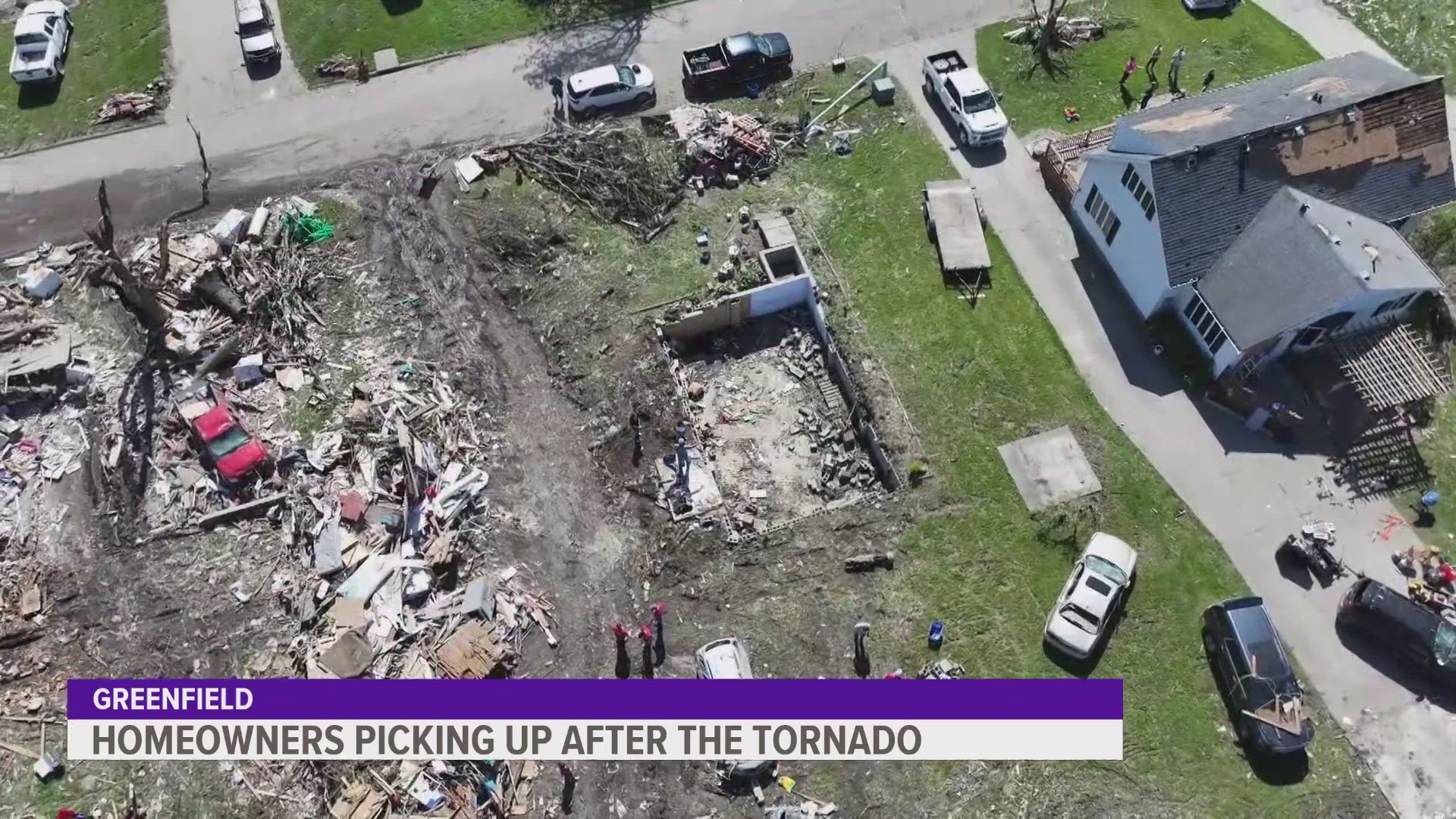Historical Occurrences of Greenfield, IA Tornadoes

Greenfield ia tornado – Greenfield, Iowa, has a history of experiencing tornadoes, with varying frequencies and severities over the years. The region’s geographical location and meteorological conditions contribute to the formation of tornadoes.
Meteorological factors that contribute to tornado formation in the region include:
- Warm, moist air from the Gulf of Mexico
- Cold, dry air from the north
- Strong winds aloft
- Unstable atmospheric conditions
Impact on the Community, Greenfield ia tornado
Tornadoes have had a significant impact on the Greenfield community, causing property damage, injuries, and loss of life. The most notable tornadoes in Greenfield’s history include:
- May 16, 1947: An F4 tornado struck Greenfield, causing widespread damage and killing one person.
- June 13, 2008: An F2 tornado touched down near Greenfield, causing significant damage to homes and businesses.
These tornadoes have left a lasting impact on the community, leading to increased awareness of tornado safety and preparedness.
Preparedness and Mitigation Strategies: Greenfield Ia Tornado

Greenfield, IA, has implemented a comprehensive emergency preparedness plan to safeguard its residents in the event of a tornado. This plan encompasses early warning systems, evacuation procedures, and community shelters, playing a crucial role in mitigating the impact of these destructive weather events.
Early Warning Systems
An early warning system is essential for providing timely alerts to residents, allowing them to seek shelter before a tornado strikes. Greenfield utilizes a network of weather sirens, which are activated by the National Weather Service (NWS) when a tornado warning is issued. Additionally, the city employs a reverse 911 system to send automated phone calls and text messages to residents within the affected area. These systems ensure that residents receive warnings as quickly as possible, increasing their chances of taking appropriate safety measures.
Evacuation Plans
Evacuation plans are designed to guide residents to designated shelters in the event of a tornado warning. Greenfield has established several community shelters in various locations throughout the city, which are identified and marked for easy accessibility. During a tornado warning, residents are advised to evacuate their homes and seek refuge in the nearest shelter. These shelters are typically constructed to withstand high winds and provide a safe haven for those seeking protection.
Community Shelters
Community shelters play a vital role in protecting residents during tornadoes. These shelters are typically located in sturdy buildings, such as schools, community centers, or churches, and are equipped with emergency supplies, including food, water, and first aid kits. Shelters are staffed by trained volunteers who assist residents with registration, provide information, and ensure their safety and well-being. The presence of these shelters provides residents with a sense of security and reduces the risk of injury or death during a tornado event.
Effectiveness of Preparedness Strategies
The effectiveness of Greenfield’s preparedness strategies has been demonstrated in past tornado events. During the 2011 tornado outbreak, the city’s early warning system and evacuation plans enabled residents to seek shelter before the tornado struck, resulting in no fatalities or serious injuries. The community shelters also proved to be effective in providing a safe haven for those displaced from their homes. These successful outcomes highlight the importance of comprehensive preparedness measures in reducing the impact of tornadoes on the community.
Lessons Learned and Future Considerations

The devastating tornado events that have struck Greenfield, Iowa, have left a profound impact on the community and have underscored the critical importance of preparedness and mitigation strategies. Lessons learned from these past events have shaped current approaches to tornado safety and have guided the development of advanced warning systems and response protocols.
One of the key lessons learned from past tornado outbreaks in Greenfield is the need for timely and accurate warnings. The ability to provide residents with sufficient lead time to seek shelter can significantly reduce the risk of injury or death. In response to this need, the National Weather Service (NWS) has invested heavily in upgrading its radar and forecasting capabilities, leading to more precise and timely tornado warnings.
Advancements in Forecasting and Warning Systems
- Improved Radar Technology: The NWS has deployed advanced radar systems, such as the NEXRAD network, which provide real-time data on storm intensity and movement. These systems allow meteorologists to identify and track tornadoes with greater accuracy and provide more detailed warnings.
- Enhanced Warning Algorithms: The NWS has developed sophisticated algorithms that analyze radar data and other meteorological information to identify potential tornadoes. These algorithms have improved the accuracy and lead time of tornado warnings, giving residents more time to seek shelter.
- Automated Warning Systems: In addition to manual warnings issued by meteorologists, the NWS has implemented automated warning systems that can issue alerts directly to mobile phones and other devices. These systems ensure that warnings reach residents even when they are not near a television or radio.
Another lesson learned from past tornado events in Greenfield is the importance of community preparedness. Residents who are educated about tornado safety and have developed emergency plans are better equipped to respond effectively when a tornado warning is issued. Community outreach programs, public education campaigns, and school safety drills have played a vital role in raising awareness and promoting preparedness.
Community Preparedness and Mitigation
- Tornado Safety Education: Community organizations and emergency management agencies conduct regular tornado safety workshops and drills to educate residents about tornado risks, warning signs, and protective actions. This education helps residents understand the importance of seeking shelter immediately when a warning is issued.
- Emergency Plans and Drills: Families and businesses are encouraged to develop emergency plans that Artikel evacuation routes, shelter locations, and communication protocols. Regular drills help families practice their plans and ensure that everyone knows what to do in the event of a tornado.
- Community Shelters: Many communities in tornado-prone areas have designated community shelters that provide safe haven during tornado events. These shelters are typically located in sturdy buildings, such as schools or churches, and are equipped with emergency supplies.
As technology continues to advance and our understanding of tornadoes improves, we can expect further advancements in tornado forecasting, warning, and response systems. These advancements will undoubtedly contribute to saving lives and reducing the impact of future tornado events.